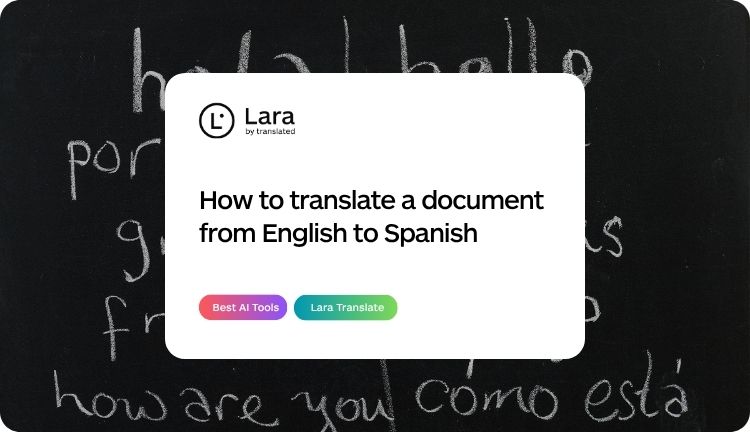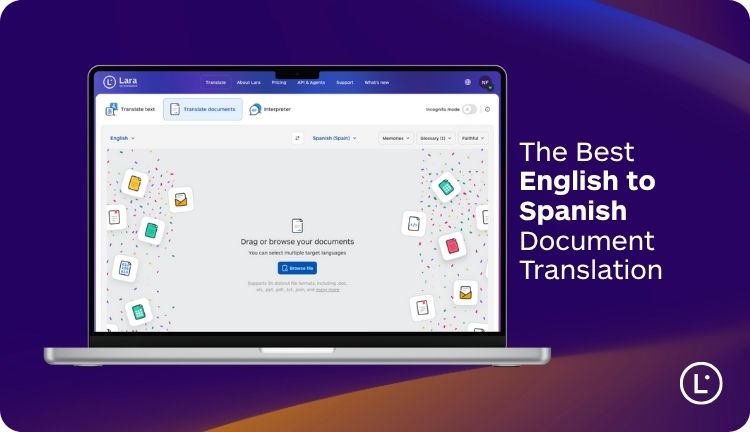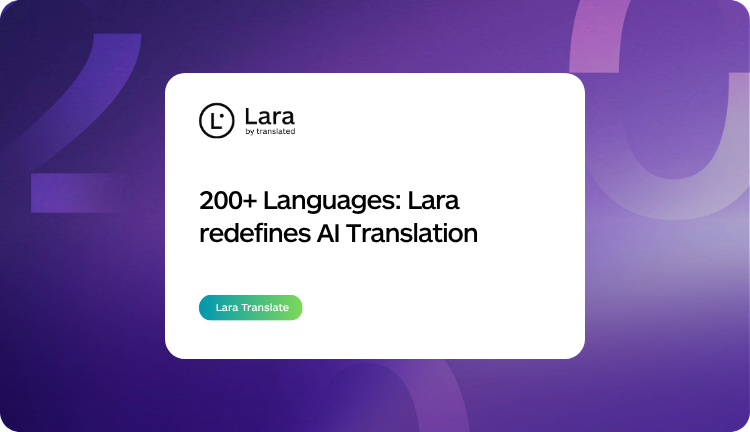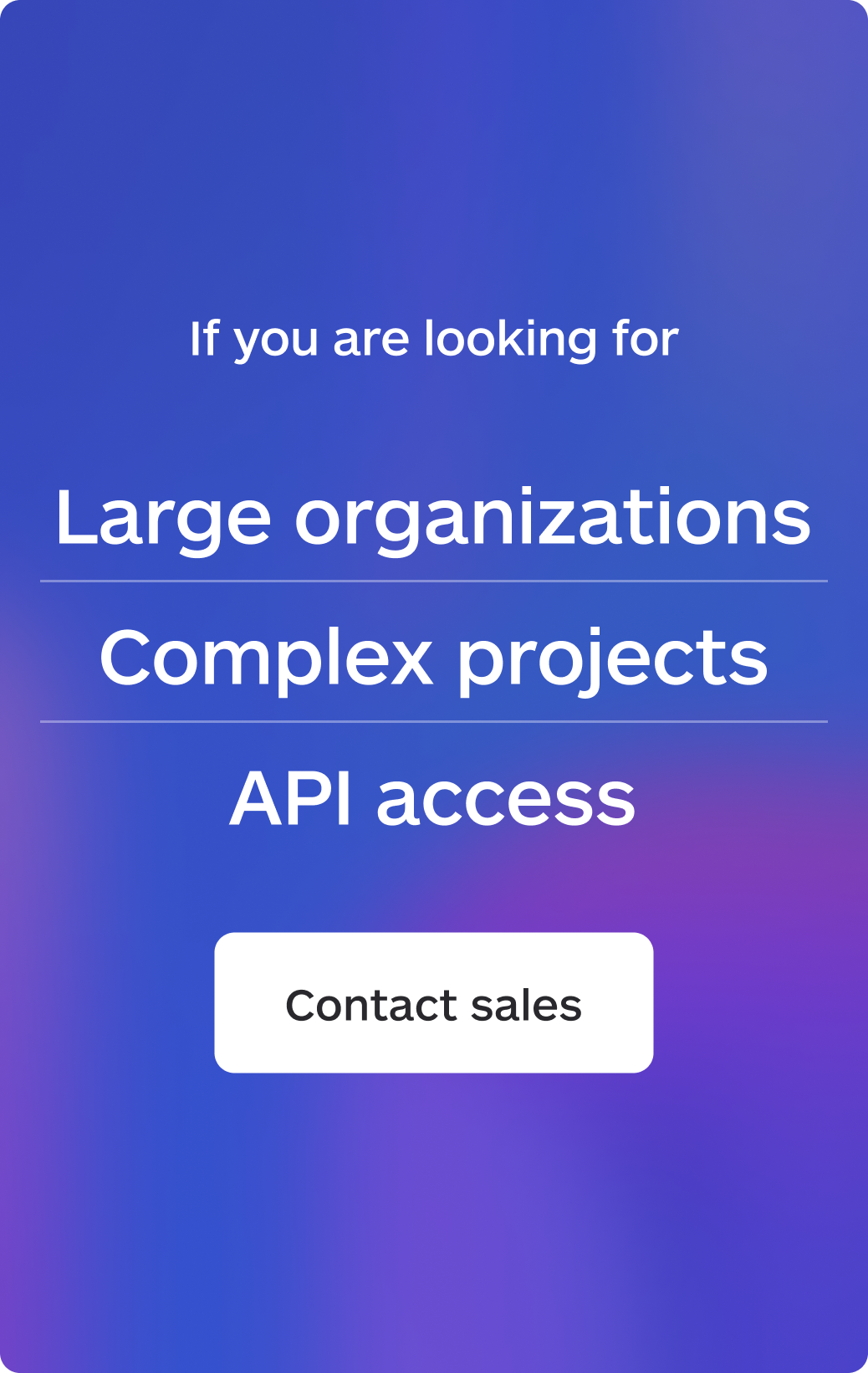Most teams translate English to Spanish because work depends on it. Legal needs contracts and policies that keep intent and terms intact. Sales and marketing need decks and one-pagers that read naturally and look polished. Ops, HR, and support need manuals, training, and help docs that stay accurate across regions.
The core problem is balance: to translate a document from English to Spanish, you need speed without losing brand tone, terminology, or layout. The sections below show when to use human expertise, when AI does the trick, and how to keep formatting and terminology consistent at scale.

The right workflow preserves tables, images, links, and styles while letting you enforce approved terms through glossaries and translation memories, so brand and legal language stay intact. Modern tools also support common file types like DOCX, PDF, PPTX, and XLSX, with options for scanned PDFs via OCR and review steps when higher assurance is needed.
Alternatives to AI translation (and when to use them)
Not every English to Spanish document needs an AI-first approach. Depending on stakes, format, and brand constraints, you might get better results with human experts, structured CAT/TMS workflows, or specialized OCR and DTP services. These options shine when nuance, regulatory accuracy, or pixel-perfect layout matters. Below is when each alternative makes sense and how to pair them with AI for speed without losing quality.
-
Human translators and LSPs. Best for high-stakes work like legal filings or nuanced marketing. Many teams still combine AI + professional review for speed and quality.
-
CAT/TMS workflows. Use glossaries, TMs, and review steps end-to-end. Modern stacks plug in AI engines beneath a QA workflow.
-
OCR + DTP services. For scanned PDFs and legacy layouts, pair OCR with human DTP when pixel-perfect reproduction is required.
If your documents are routine and you need speed, an AI tool with glossaries/TMs plus optional human review is typically enough.
Best tools to translate a document from English to Spanish
#1 Lara Translate
Why it’s great for EN→ES documents
Purpose-built for context control with glossaries and translation memories. It preserves document structure, supports 50+ formats, and explains choices or flags ambiguous terms so you stay in control. Works in the UI and via SDK/API for bulk jobs.
To translate a document from English to Spanish with formatting preserved: upload your file to Lara Translate, pick Spanish, add a glossary if needed, choose your style (Fluid, Faithful, or Creative), then download the output with the layout intact. Works for PDF, DOCX, PPTX, XLSX, JSON, and more.
Key features
-
Document translation with layout kept for DOCX, PDF, PPTX, XLSX, JSON, XLIFF, and 50 more formats.
-
Glossaries and TMs to enforce terminology and reuse past translations.
-
Instruction following and selectable styles (Fluid, Faithful, Creative) for tone control.
-
SDK + API to automate document translation workflows.
Pain point
-
Pro plan includes generous but default quotas for pages and characters. For higher volumes, use the API’s usage-based pricing.
Costs
-
Free: €0. Text and light document limits.
-
Pro: ~€9/month.
-
API: usage-based for scale.
#2 Google Cloud Translation (Advanced / v3)
Why for EN→ES
Reliable document translation API with good layout keeping for Office/PDF and a simple per-page price for formatted docs. Strong for pipelines and workflows.
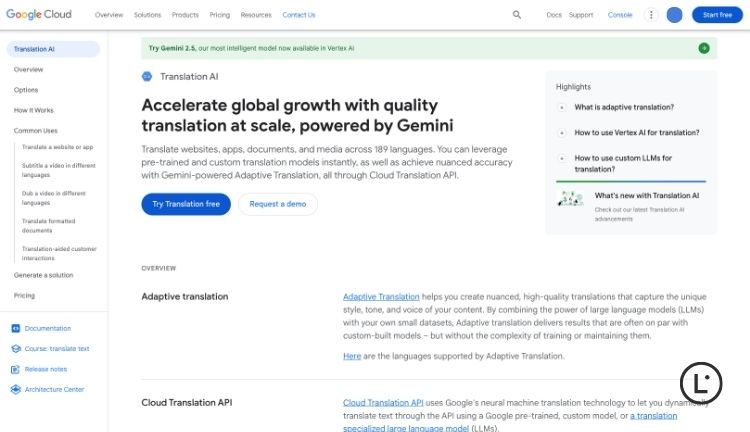
Highlights
-
Text and document translation.
-
Per-page billing for DOCX, PPT, PDF.
-
Free tier for text, detailed pricing tiers.
Pain points
-
Estimating cost can be tricky (mix of per-character and per-page pricing).
-
Non-developer teams face a steeper setup (IAM roles, projects, billing, APIs).
-
Complex/graphic-heavy PDFs may need extra preprocessing for best layout retention.
Costs
-
Text: first 500k chars free monthly, then about $20 per million chars.
-
Formatted docs: about $0.08 per page with NMT.
#3 Azure AI Translator
Why for EN→ES
Microsoft-centric teams get straightforward APIs, document translation, and enterprise purchasing options including commitment tiers and containers.
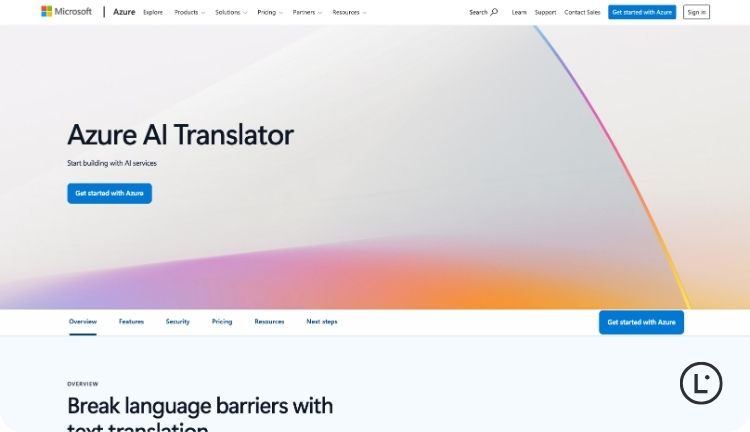
Highlights
-
Text and document translation, custom and standard.
-
Commitment tiers and disconnected containers for compliance.
Pain points
-
Pricing and feature availability vary by region/sku; hard to forecast at a glance.
-
Azure setup/permissions and resource provisioning can slow first deployment.
-
Advanced terminology control often requires Custom Translator workflows and extra effort.
Costs
-
Pay as you go per million characters, with commitment tiers for volume. Use pricing calculator or contact sales.
#4 Amazon Translate
Why for EN→ES
Great fit for AWS-native workflows. Offers document translation for Office files and real-time document translation with layout retention.
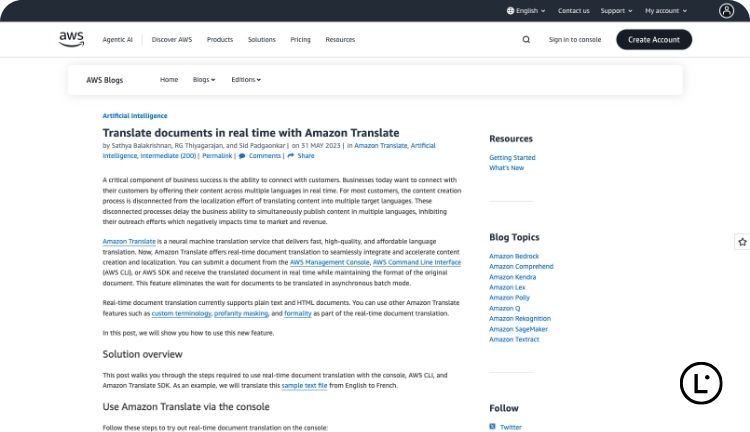
Highlights
-
Document translation for TXT, HTML, DOCX, PPTX, XLSX, XLIFF.
-
Real-time document translation.
-
Active Custom Translation for domain adaptation.
Pain points
-
Scanned PDFs typically need Textract/OCR pipelines, adding cost and complexity.
-
Real-time DOCX translation is priced higher than standard text/HTML.
-
Terminology features are more limited than full TM/segment workflows.
Costs
-
Standard docs: $15 per million chars.
-
Real-time DOCX: $30 per million chars.
-
Active Custom Translation: $60 per million chars. Free tier available.
#5 Smartcat
Why for EN→ES
Upload a file, get a translated document with OCR for PDFs and optional human review in the same platform. Good for teams wanting an all-in-one UI. (Pricing is plan-based and often requires sales for exact terms.)
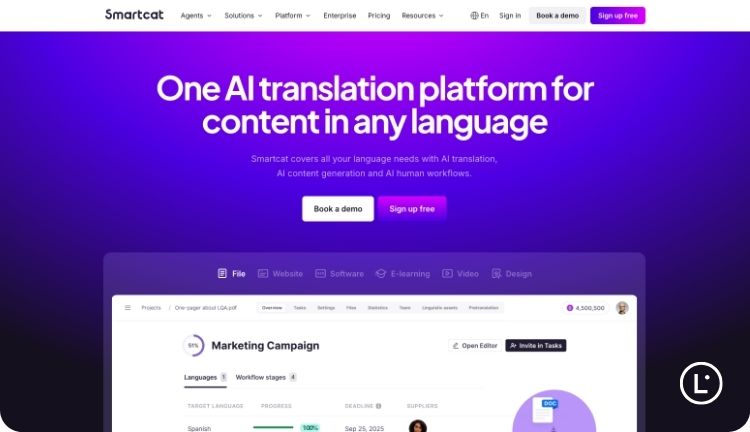
Highlights
-
80+ file types supported and format preservation with AI.
-
Integrated glossary/TM workflows and marketplace of linguists.
Pain points
-
Public pricing and usage limits aren’t always transparent; details often require sales.
-
OCR quality can vary on complex layouts (tables, stamps, small fonts).
-
AI + marketplace workflow may add coordination overhead compared to a pure API path.
Costs
-
Public pricing varies by edition and channel. See pricing pages or listings for current offers.
#6 RWS Language Weaver
Why for EN→ES
A strong pick for regulated enterprises needing on-prem or hybrid deployment, connectors, and enterprise controls.
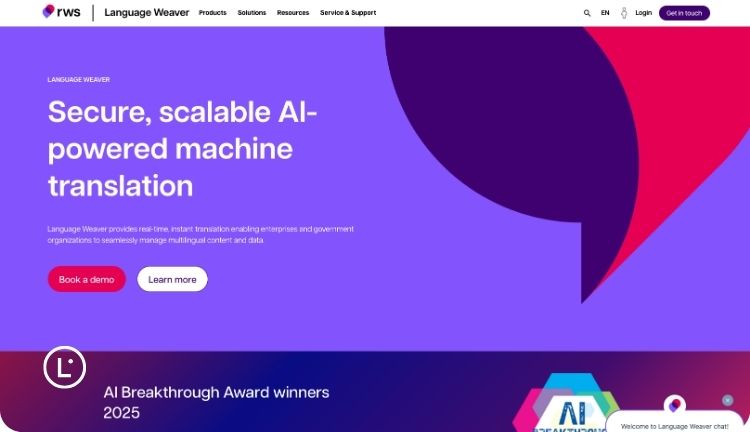
Highlights
-
Cloud, on-prem, or hybrid.
-
Connectors for Office suites and enterprise platforms.
Pain points
-
Contract/sales-led pricing; harder to test/price quickly for smaller teams.
-
On-prem/hybrid deployments introduce IT overhead and longer implementation cycles.
-
Connector and enterprise feature licensing can increase total cost of ownership.
Costs
-
Contact sales. Contract terms via RWS or marketplace listings.
Step-by-step: Translate a document from English to Spanish with Lara Translate
Ready to turn an English file into polished Spanish without breaking the layout? Here’s the quickest path in Lara: upload your document, set the language pair, apply your glossary or translation memory, choose the style that fits the job, and download a clean, formatted result. Follow the steps below to go from upload to final Spanish file in minutes.
Or if you prefer, follow this quick guide to translate documents from English to Spanish.
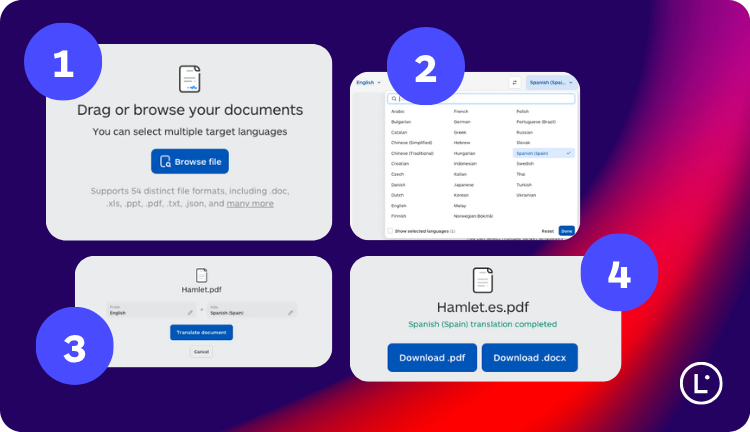
Steps:
-
Open Lara Translate and go to Translate Documents.
-
Upload your file (DOCX, PDF, PPTX, XLSX, JSON, XLIFF, etc.).
-
Set From: English and To: Spanish.
-
Optional: Add a glossary for legal or brand terms and enable your translation memory.
-
Choose style: Fluid for natural prose, Faithful for precise technical or legal, Creative for marketing.
-
Click Translate, then Download the Spanish document with formatting preserved.
Need scale or automation? Use Lara Translate’s SDK/API for complex jobs in your pipeline.
Picking the right approach
Choosing the right path depends on your constraints. If you need speed and control in a single UI, start with Lara Translate plus glossary and TM. If you are automating large volumes, use APIs and pipelines. AWS-native teams can stay on Amazon. If you want an all-in-one workspace with optional human review, try Smartcat. For strict on-prem compliance, pick Language Weaver.
-
Speed + control: Lara Translate in the UI with glossary/TM.
-
Pipelines: Google Cloud, Azure, or Lara API.
-
AWS stack: Amazon Translate.
-
All-in-one UI with human review: Smartcat, Lara Translate.
-
On-prem compliance: Language Weaver, Lara Translate.
This article is about
-
The fastest ways to translate document English Spanish without losing formatting.
-
When to pick Lara Translate vs cloud APIs or enterprise solutions.
-
How to apply glossaries and translation memories for consistent terminology.
-
A step-by-step guide and cost overview to choose the right tool for your team.
FAQ
How do I translate a document from English to Spanish while keeping the layout?
Upload your file to Lara Translate, select Spanish, apply your glossary/TM, and download the formatted result. Works for DOCX, PDF, PPTX, XLSX, JSON, and XLIFF.
What’s the fastest way to translate a document from English to Spanish for business use?
Use an AI document translator with glossaries and translation memories (e.g., Lara Translate) to get speed and consistency, then add human review for high-stakes content.
Can I translate a document from English to Spanish if it’s a scanned PDF?
Yes. Run OCR first (or use a tool with OCR support), then translate. For complex layouts or stamps, plan a light DTP check after translation.
How do I ensure legal terminology when I translate a document from English to Spanish?
Create a legal glossary (terms + approved translations) and enable it during translation. Pair with a translation memory to reuse prior legal phrasing.
What file types can I translate from English to Spanish?
Common formats include DOCX, PDF, PPTX, XLSX, JSON, and XLIFF. Most modern tools preserve headings, tables, images, and hyperlinks.
Is it safe to translate a document from English to Spanish with confidential data?
Choose a provider with enterprise security, clear data-retention policies, and regional hosting. For regulated content, consider on-prem or private deployment.
How much does it cost to translate a document from English to Spanish?
Pricing varies: subscriptions for UI-based tools; per-character or per-page for APIs; and service fees for human review. Estimate by document count, pages, and update frequency.
When should I avoid AI and use human translators to translate a document from English to Spanish?
For high-risk materials—contracts, regulatory filings, clinical or financial reports—use human experts or at least human QA on top of AI output.
